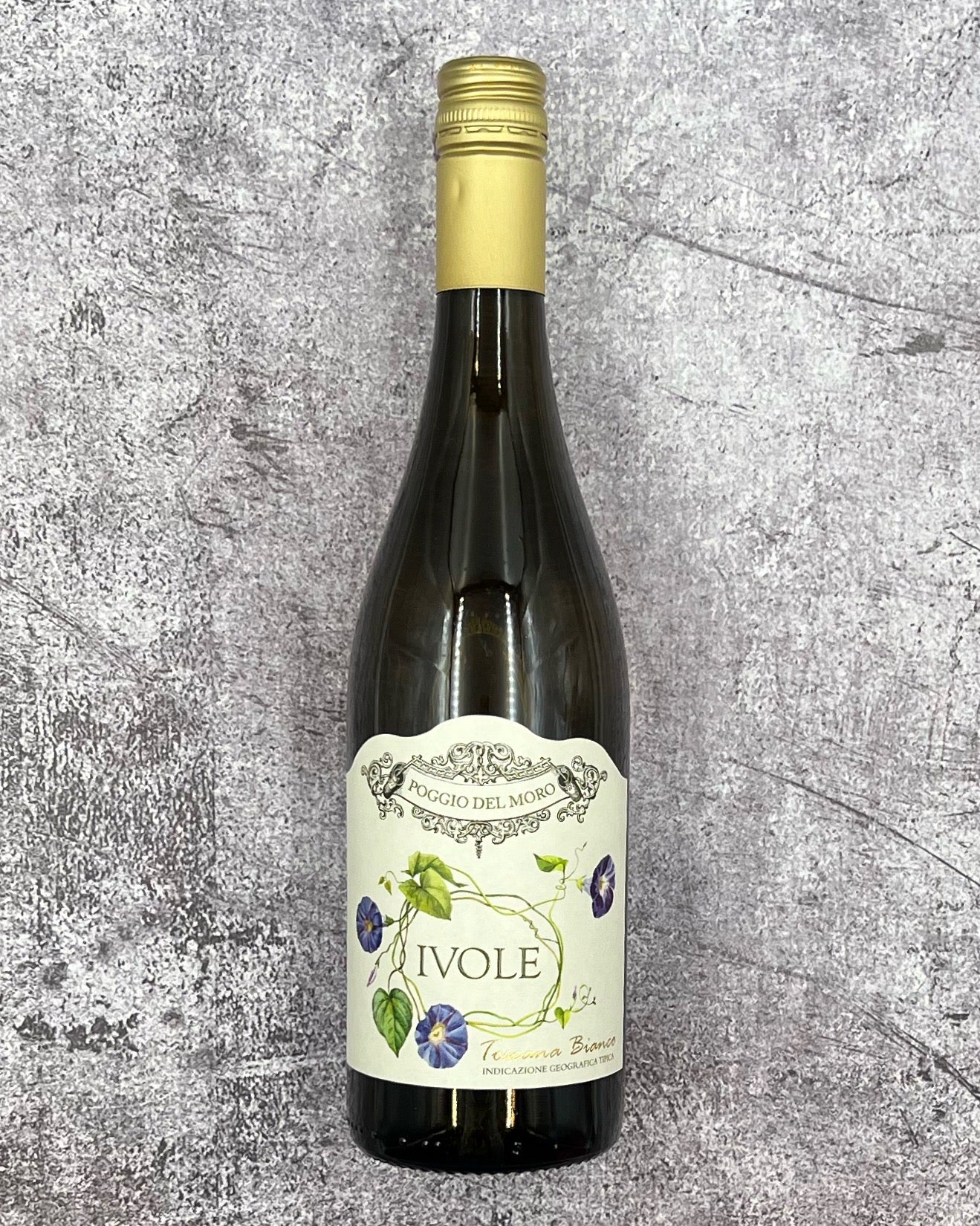Description
From: Tuscany, Italy
Blend: 70% Trebbiano, 20% Grechetto, 10% Malvasia
Taste: On the nose, a fresh, crisp bouquet of plum, pear, and melon along with a touch of nuttiness. Lighthearted, mineral notes of wildflowers and herbs linger on the palate towards a finish that sparkles with hints of lemon and orange.
Pairing: This wine has us craving the salty earthiness of pecorino cheese, so for today’s pairing we’d like to share this Bon Appetit recipe from Evan Funke, the chef-owner of a pasta restaurant called Felix Trattoria in LA. We love the addition of Fava beans, but the pasta will stand on its own without that ingredient.
Bucatini Alla Griccia with Fava Beans
Organic
Biodynamic
About. The Poggio del Moro estate is located in the middle of Tuscany, just south of Montepulciano and in the neighborhood of old Chianciano Terme, famous for its thermal baths of mineral spring water frequented since the first century BCE. (By that time, Etruscans had been drinking wine in the area for centuries.) The Poggio del Moro estate, now run by current owners Tatiana and Alex and their team, has produced Tuscan wine and olive oil its rich agricultural lands for more than three centuries.
Vineyards on this certified organic estate receive diligent care; they are cultivated by hand with strict respect for nature and tradition, and an ecofriendly approach from field to cellar. Wine production takes place mostly in underground cellars to optimize energy consumption.
White grape varietals like the Trebbiano, Grechetto, and Malvasia found in this wine are planted on almost five of Poggio del Moro’s 34.6 acres of vineyard area. This wine comes from the Vigneto dell’Onda vineyard, which faces east to catch maxium sun during the day and breezes at night. Its 9-10 year old vines are planted in sand, clay, and light loam soils at 951-985 feet above sea level. This soil combination contributes to a special freshness and strength of flavor.
The grapes were picked before 10 o’clock in the morning, and placed overnight in Poggio del Moro’s cool, underground fruttaia (room used for drying grapes to make a desert wine called vinsanto). The following morning the whole-cluster grapes were pressed and their juice was sent to temperature controlled vessels where fermentation occured naturally with indigenous yeasts for a period of 30-35 days. Next, the wine aged for three months on its fine lees (yeast sediment) in stainless steel barrels with frequent bâtonnage (lees stirring) to enhance the richness of flavor imparted by lees contact. The wine was then bottled with the timing of the full moon.

